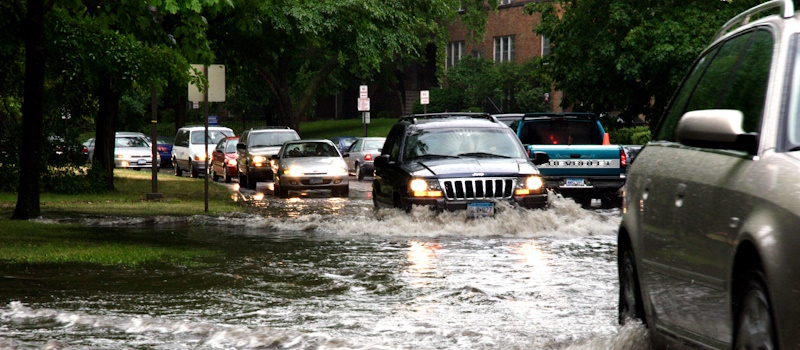Flood Recovery: What's Protected for My Car?
Flood Recovery: What's Protected for My Car?

Flood Recovery: What's Protected for My Car?
Whether it's the result of hurricanes, heavy rainfall or other severe weather events, hundreds of thousands of vehicles are flooded every year in the United States. Floodwaters can do serious damage to a vehicle. Not only can they take their toll on the engine, transmission and other key drivetrain components, but floodwaters may also harm the interior, electronics, brakes, airbags and vehicle body.
It's only natural for auto owners who experience flood damage to wonder about their insurance coverage. In this post, we'll discuss how a flood car is defined, how to find out if you're covered and what to do.
Flood Cars 101: How is a Flooded Car Defined?
According to the Insurance Information Institute, a flood car is considered to be any vehicle that has been fully or partially submerged to the point that the engine, transmission, body and other key components have been damaged.
Is My Flooded Car Covered?
If you have comprehensive coverage on your auto insurance policy, the answer is typically "yes." Auto insurance policies tend to have several different types of coverage. One is collision coverage, which covers crashes that involve your vehicle colliding with another object (i.e., car, pole, mailbox or building). Comprehensive coverage, on the other hand, covers damage caused by incidents that aren't collisions and are often beyond your control. This includes damage sustained in natural disasters, such as severe weather and floods. Comprehensive insurance also covers other weather-related incidents, such as hail damage, lightning damage and more.
Comprehensive coverage is not mandatory, though lenders and banks often require full insurance—which includes comprehensive coverage—if you're financing or leasing a vehicle. Additionally, if you live in an area susceptible to flooding and heavy rain, it's suggested that you obtain comprehensive coverage to protect against flood damage.
How Much Am I Covered For?
Assuming you have comprehensive coverage on your policy, you'll want to refer to your auto insurance policy or contact your insurance agent to get specifics on your coverage. All policies have comprehensive limits, which are defined as the maximum amount that your insurance policy will pay toward a covered claim. Often, these limits are the actual cash value of your vehicle, based upon industry valuation and research. A common misconception is that the settlement will cover the cost of a new vehicle.
Additionally, you're going to have to pay your deductible before comprehensive coverage kicks in. A deductible is your out-of-pocket cost before the policy will cover any damages. Deductibles tend to range from $200 to $2,000.
What Should I Do After My Car is Flooded?
If your vehicle has been flooded, don't attempt to start it. Instead, document the level of water exposure and let your vehicle dry out. Any photos or videos you take of the flood damage will help serve as evidence when you file a claim and work with your insurance company and adjuster.
